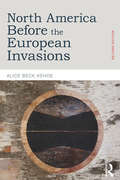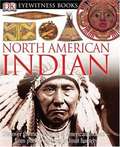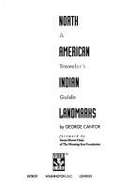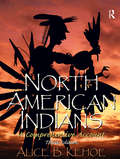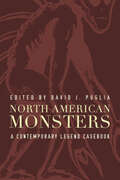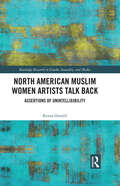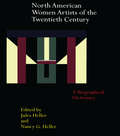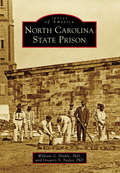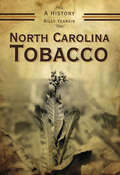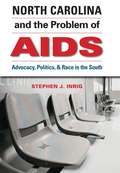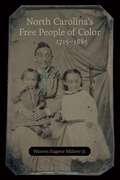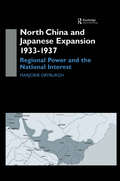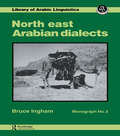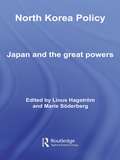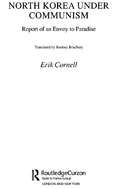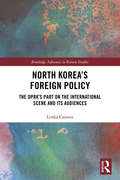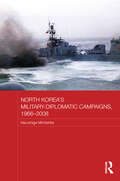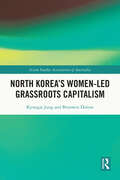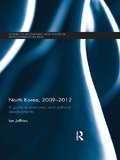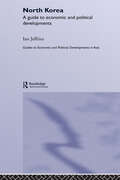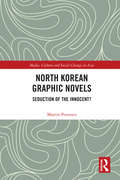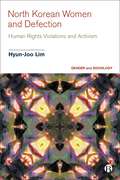- Table View
- List View
North America before the European Invasions
by Alice Beck KehoeNorth America Before the European Invasions tells the histories of North American peoples from first migrations in the Late Glacial Age, sixteen thousand years ago or more, to the European invasions following Columbus’s arrival. Contrary to invaders’ propaganda, North America was no wilderness, and its peoples had developed a variety of sophisticated resource uses, including intensive agriculture and cities in Mexico and the Midwest. Written in an easy-flowing style, the book is a true history although based primarily on archeological material. It reflects current emphasis within archaeology on rejecting the notion of “pre”-history, instead combining archaeology with post-Columbian ethnographies and histories to present the long histories of North America’s native peoples, most of them still here and still part of the continent’s history.
North American Gaels: Speech, Story, and Song in the Diaspora (McGill-Queen's Studies in Ethnic History #2.49)
by Natasha Sumner and Aidan DoyleA mere 150 years ago Scottish Gaelic was the third most widely spoken language in Canada, and Irish was spoken by hundreds of thousands of people in the United States. A new awareness of the large North American Gaelic diaspora, long overlooked by historians, folklorists, and literary scholars, has emerged in recent decades. North American Gaels, representing the first tandem exploration of these related migrant ethnic groups, examines the myriad ways Gaelic-speaking immigrants from marginalized societies have negotiated cultural spaces for themselves in their new homeland. In the macaronic verses of a Newfoundland fisherman, the pointed addresses of an Ontario essayist, the compositions of a Montana miner, and lively exchanges in newspapers from Cape Breton to Boston to New York, these groups proclaim their presence in vibrant traditional modes fluently adapted to suit North American climes. Through careful investigations of this diasporic Gaelic narrative and its context, from the mid-eighteenth century to the twenty-first, the book treats such overarching themes as the sociolinguistics of minority languages, connection with one's former home, and the tension between the desire for modernity and the enduring influence of tradition. Staking a claim for Gaelic studies on this continent, North American Gaels shines new light on the ways Irish and Scottish Gaels have left an enduring mark through speech, story, and song.
North American Indian (Eyewitness)
by David MurdochIn this book, readers will discover the rich cultures of American Indians-- from pueblo dwellers to Inuit hunters.
North American Indian Landmarks: A Traveler's Guide
by George CantorIdentifies some 300 sites, gives some history about each, and provides phone numbers and admission data (hours, cost). Arrangement is by region. Supplementary material includes a chronology, a short glossary, and a list of books for further reading. Annotation c. by Book News, Inc., Portland, Or.
North American Indians: A Comprehensive Account
by Alice Beck KehoeWritten in an easy-to-read, narrative format, this volume provides the most comprehensive coverage of North American Indians from earliest evidence through 1990. It shows Indians as "a people with history" and not as primitives, covering current ideological issues and political situations including treaty rights, sovereignty, and repatriation. A must-read for anyone interested in North American Indian history. This is a comprehensive and thought-provoking approach to the history of the native peoples of North America (including Mexico and Canada) and their civilizations.For Native American courses taught in anthropology, history and Native American Studies.
North American Monsters: A Contemporary Legend Casebook (Contemporary Legend Casebook Series)
by David J. PugliaMining a mountain of folklore publications, North American Monsters unearths decades of notable monster research. Nineteen folkloristic case studies from the last half-century examine legendary monsters in their native habitats, focusing on ostensibly living creatures bound to specific geographic locales. A diverse cast of scholars contemplate these alluring creatures, feared and beloved by the communities that host them—the Jersey Devil gliding over the Pine Barrens, Lieby wriggling through Lake Lieberman, Char-Man stalking the Ojai Valley, and many, many more. Embracing local stories, beliefs, and traditions while neither promoting nor debunking, North American Monsters aspires to revive scholarly interest in local legendary monsters and creatures and to encourage folkloristic monster legend sleuthing.
North American Muslim Women Artists Talk Back: Assertions of Unintelligibility (Routledge Research in Gender, Sexuality, and Media)
by Kenza OumlilThis book focuses on the ways in which North American Muslim women artists ‘talk back’ to dominant discourses about Muslim identity and work to counter mainstream stereotypes and representations. It examines the possibilities of constructing discourses of resistance to domination. Against a backdrop of dominant media representations of oppressed and passive Muslim women, the media interventions of the exceptional women artists whose voices are showcased in this book, demonstrate that Muslim women are diverse and autonomous agents who have, historically, and continue contemporarily, to fight against all forms of injustice including those that seek to circumscribe their realities and experiences. To explore expressions and articulations of alternative discourses, this book analyzes the media texts of exceptional women artists: the stand-up comedy of Palestinian-American Maysoon Zayid, the cinematic interventions of Iranian-American Shirin Neshat, and the television comedy of Pakistani-Canadian Zarqa Nawaz. Using a methodology consisting of a textual analysis grounded in the theoretical framework of postcolonial theory and informed by gender studies and alternative media research, the analysis is supplemented with semi-structured interviews with the artists. This book is suitable for scholars and students in Gender Studies, Media Studies, Cultural Studies, Sociology and Politics.
North American Women Artists of the Twentieth Century: A Biographical Dictionary (Reference Library Of The Humanities #Vol. 1219)
by Nancy G. Heller Jules HellerFirst Published in 1997. North American Women Artists of the Twentieth Century: A Biographical Dictionary was created to fill a gap of there being a comprehensive reference work like this available, even though the bibliography in English on various aspects of the history of women artists has grown exponentially during the past ten years. As researchers, the editors have been frustrated many times by being unable to locate basic information about many of the artists included in this volume—especially those working outside the United States. This leads directly to another reason for producing this particular kind of reference book—to try and create a better understanding between and among the artists and art audiences in these countries.
North Carolina Geography, History, and Culture
by Michael J. Berson Tyrone C. Howard Cinthia SalinasNIMAC-sourced textbook
North Carolina State Prison (Images of America)
by William G. Hinkle Gregory S. TaylorNorth Carolina's State Prison was typical of American prisons in the 19th century, but with an important difference. North Carolina put most of its inmates outside prison walls to work on road camps and prison farms for the purpose of getting useful work out of them. Opened in 1870, the prison in Raleigh housed only a fraction of the prisoners. Those inmates were for the most part too old, too sick, or too feeble to handle anything other than light institutional work details. This book explores all three components of North Carolina's early prison system, including its use of prison chain gangs, and clarifies how a penitentiary differs from a reformatory, correctional institution, or community-based facility.
North Carolina Tobacco: A History
by Billy YearginA look at the plant&’s influence on the history and culture of the Old North State. The days when rural life revolved around tobacco planting and harvest are gone, but many fondly remember when North Carolina was the state of farming, planting and picking tobacco. In this book, historian Billy Yeargin takes readers back to the days when communities were founded and built upon tobacco culture, and when traditions developed as industries were born. Yeargin recounts the deeply intriguing influence of tobacco on the history and culture of the state.
North Carolina and the Problem of AIDS
by Stephen J. InrigThirty years after AIDS was first recognized, the American South constitutes the epicenter of the United States' epidemic. Southern states claim the highest rates of new infections, the most AIDS-related deaths, and the largest number of adults and adolescents living with the virus. Moreover, the epidemic disproportionately affects African American communities across the region. Using the history of HIV in North Carolina as a case study, Stephen Inrig examines the rise of AIDS in the South in the period from the early spread and discovery of the disease through the late nineties.Drawing on epidemiological, archival, and oral history sources, Inrig probes the social determinants of health that put poor, rural, and minority communities at greater risk of HIV infection in the American South. He also examines the difficulties that health workers and AIDS organizations faced in reaching those communities, especially in the early years of the epidemic. His analysis provides an important counterweight to most accounts of the early history of the disease, which focus on urban areas and the spread of AIDS in the gay community. As one of the first historical studies of AIDS in a southern state, North Carolina and the Problem of AIDS provides powerful insight into the forces and factors that have made AIDS such an intractable health problem in the American South and the greater United States.
North Carolina’s Free People of Color, 1715–1885
by Warren Eugene Milteer Jr.In North Carolina’s Free People of Color, 1715–1885, Warren Eugene Milteer Jr. examines the lives of free persons categorized by their communities as “negroes,” “mulattoes,” “mustees,” “Indians,” “mixed-bloods,” or simply “free people of color.” From the colonial period through Reconstruction, lawmakers passed legislation that curbed the rights and privileges of these non-enslaved residents, from prohibiting their testimony against whites to barring them from the ballot box. While such laws suggest that most white North Carolinians desired to limit the freedoms and civil liberties enjoyed by free people of color, Milteer reveals that the two groups often interacted—praying together, working the same land, and occasionally sharing households and starting families. Some free people of color also rose to prominence in their communities, becoming successful businesspeople and winning the respect of their white neighbors. Milteer’s innovative study moves beyond depictions of the American South as a region controlled by a strict racial hierarchy. He contends that although North Carolinians frequently sorted themselves into races imbued with legal and social entitlements—with whites placing themselves above persons of color—those efforts regularly clashed with their concurrent recognition of class, gender, kinship, and occupational distinctions. Whites often determined the position of free nonwhites by designating them as either valuable or expendable members of society. In early North Carolina, free people of color of certain statuses enjoyed access to institutions unavailable even to some whites. Prior to 1835, for instance, some free men of color possessed the right to vote while the law disenfranchised all women, white and nonwhite included. North Carolina’s Free People of Color, 1715–1885 demonstrates that conceptions of race were complex and fluid, defying easy characterization. Despite the reductive labels often assigned to them by whites, free people of color in the state emerged from an array of backgrounds, lived widely varied lives, and created distinct cultures—all of which, Milteer suggests, allowed them to adjust to and counter ever-evolving forms of racial discrimination.
North China and Japanese Expansion 1933-1937: Regional Power and the National Interest
by Marjorie DryburghThis work draws on a wide range of Chinese and Japanese sources to analyse the uncertain loyalties and complex internal pressures that drove Sino-Japanese interaction in prewar north China. It examines the shifting understandings of the North China problem in its practical, political and moral aspects, and challenges existing assumptions concerning Chinese relations with Japan and their impact on domestic politics.
North East Arabian Dialects Mono
by InghamFirst published in 1982. Routledge is an imprint of Taylor & Francis, an informa company.
North Korea Policy: Japan and the Great Powers (European Institute of Japanese Studies East Asian Economics and Business Series)
by Marie Söderberg Linus HagströmNorth Korea features highly on the agenda of the main actors in East Asia and around the globe, and many large foreign policy initiatives have been undertaken since the structural constraints of the Cold War started to loosen in the early 1990s. The centrality of North Korea has been particularly emphasized by the country's suspected development of nuclear weapons which is regarded as one of the largest de-stabilising factors in the Asia-Pacific region. This comprehensive book analyzes the formation of the North Korea policy in the context of great power relations in East Asia, specifically focusing on Japan's policy formation and 'the Japan factor' in the North Korea policies of other concerned great powers, namely the US, China, Russia, South Korea and the EU. By adopting an empirical focus on the international interaction over North Korea, this book brings together issues that are highly relevant to contemporary Japanese foreign policy; clarifies what is happening in the region right now and plots what policy options are available for the future. Policy-oriented and based on careful empirical analysis, North Korea Policy will appeal to both policy makers and scholars of Asian foreign policy.
North Korea under Communism: Report of an Envoy to Paradise
by Cornell ErikAfter the collapse of the Soviet world, North Korea alone has continued on the rigid communist way, in spite of its economic consequences leading the state beyond ruin to famine. What are the reasons behind this peculiar choice of direction? Why did the leaders in Pyongyang pursue a policy abandoned not only by the Soviet Union, but also by China and Vietnam? The author of this book spent three years as head of the embassy of Sweden in Pyongyang. Until a few years ago, it was the only Western embassy in North Korea. His unique experiences are related with descriptions of day-to-day life and with analyses of economic, political and ideological conditions. A picture is drawn of a society and a political order that defy both human nature and common sense.
North Korea's Foreign Policy: The DPRK's Part on the International Scene and Its Audiences (Routledge Advances in Korean Studies)
by Lenka CaisovaThis book analyses North Korean foreign policy since 1994, aiming to better understand the part the DPRK plays in international politics. Pyongyang is the country’s capital and largest city. To the north and northwest, the country is bordered by China and by Russia along the Amnok and Tumen rivers; it is bordered to the south by South Korea, with the heavily fortified Korean Demilitarized Zone separating the two. Nevertheless, North Korea, like its southern counterpart, claims to be the legitimate government of the entire peninsula and adjacent islands. Both North Korea and South Korea became members of the UN in 1991. Applying the role theoretical approach to North Korea for the first time, this book charts the continuities and changes in North Korean foreign policy, drawing on content analysis of North Korean periodicals. It begins with an identification of roles, before analysing the relationship between these roles and foreign policy in practice. In particular, it examines the links between role shifts and changes in interaction with the U.S. and South Korea. This book also demonstrates that the existence of pressure, sanctions and confrontations have contributed to a confrontational, isolationist and inward-looking foreign policy. Therefore, it argues, one should be aware that if the DPRK is constantly treated as if it is a nuclear state – and even a rogue state – it is much easier for it to enact a role on the international stage which reflects this. As a study of the foreign policy of the world’s most controversial and secretive country, this book will be invaluable to students and scholars of Korean politics and international relations, as well as Asian Studies more generally.
North Korea's Military-Diplomatic Campaigns, 1966-2008 (Routledge Security in Asia Pacific Series)
by Narushige MichishitaThis book examines North Korea’s nuclear diplomacy over a long time period from the early 1960s, setting its dangerous brinkmanship in the wider context of North Korea’s military and diplomatic campaigns to achieve its political goals. It argues that the last four decades of military adventurism demonstrates Pyongyang’s consistent, calculated use of military tools to advance strategic objectives vis à vis its adversaries. It shows how recent behavior of the North Korean government is entirely consistent with its behavior over this longer period: the North Korean government’s conduct (rather than being haphazard or reactive) is rational – in the Clausewitzian sense of being ready to use force as an extension of diplomacy by other means. The book goes on to demonstrate that North Korea’s "calculated adventurism" has come full circle: what we are seeing now is a modified repetition of earlier events – such as the Pueblo incident of 1968 and the nuclear and missile diplomacy of the 1990s. Using extensive interviews in the United States and South Korea, including those with defected North Korean government officials, alongside newly declassified first-hand material from U.S., South Korean, and former Communist-bloc archives, the book argues that whilst North Korea’s military-diplomatic campaigns have intensified, its policy objectives have become more conservative and are aimed at regime survival, normalization of relations with the United States and Japan, and obtaining economic aid.
North Korea's Women-led Grassroots Capitalism (ASAA Women in Asia Series)
by Kyungja Jung Bronwen DaltonNorth Korea is in the throes of economic and social, if not political, transition. These changes have a pronounced gender dimension: the crisis of the command economy and the gradual emergence of an informal market economy, where, remarkably, the vast majority of North Korea’s traders and merchants are women. This book examines the complex relationship between gender roles and economic and social changes in North Korea. The book, based on extensive original research, provides rich details of this development, considers how women’s roles in North Korea have developed over time and highlights how women are driving change in other areas of North Korean life too, including family relationships, women’s sexuality and reproductive issues and women’s cultural identity.
North Korea, 2009-2012: A Guide to Economic and Political Developments (Guides to Economic and Political Developments in Asia)
by Ian JeffriesNorth Korea continues to be a country of great concern internationally, where future developments are uncertain, especially as a result of the succession to the leadership of Kim Jong-un following the death of Kim Jong-il. It is also a country which is relatively unknown and relatively little studied. This book provides a comprehensive, detailed survey of economic and political developments in the last few years. As such it provides many insights into the current trends which are likely to shape the country’s future direction.
North Korea: A Guide to Economic and Political Developments (Guides to Economic and Political Developments in Asia #Vol. 1)
by Ian JeffriesThere is much intense interest in North Korea at present. This partly arises from questions about Korea's nuclear capability and intentions, and about the extent to which North Korea may be viewed as 'a rogue state' or part of 'the axis of evil'. In addition, however, North Korea has recently begun experimenting with reforms along Chinese lines. The vigour with which these will be pursued, and related questions about the degree of engagement, or otherwise, with South Korea are also important issues. This book provides full details of economic and political developments in North Korea since 1989 when the communist world began to change irrevocably.
North Korean Graphic Novels: Seduction of the Innocent? (Media, Culture and Social Change in Asia)
by Martin PetersenGraphic novels (kurimchaek) are a major art form in North Korea, produced by agents of the regime to set out its vision in a range of important areas. This book provides an analysis of North Korean graphic novels, discussing the ideals they promote and the tensions within those ideals, and examining the reception of graphic novels in North Korea and by North Korean refugees in South Korea. Particular themes considered include the ideal family and how the regime promotes this; patriotism, and its conflict with class identities; and the portrayal of the Korean War – "The Fatherland Liberation War", as it is known in North Korea – and the subsequent, continuing stand-off. Overall, the book demonstrates the importance of graphic novels in North Korea as a tool for bringing up children and for promoting North Korean ideals. In addition, however, the book also shows that although the regime sees the imaginative power of graphic novels as a necessity for effective communication, graphic novels are also viewed with caution in that they exist in everyday social life in ways that the regime may be aware of, and seeks to control, but cannot dominate completely.
North Korean Women and Defection: Human Rights Violations and Activism
by Hyun-Joo LimRecent North Korean diaspora has given rise to female refugee groups fighting for the protection of women’s rights. Presenting in-depth accounts of North Korean women defectors living in the UK, this book examines how their harrowing experiences have become an impetus for their activism. The author also reveals how their utopian dream of a better future for fellow North Korean women is vital in their activism. Unique in its focus on the intersections between gender, politics, activism and mobility, Lim's illuminating work will inform debates on activism and human rights internationally.
